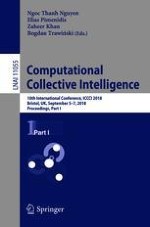2018 | OriginalPaper | Chapter
Airplane Boarding Strategies Using Agent-Based Modeling and Grey Analysis
Authors : Camelia Delcea, Liviu-Adrian Cotfas, Ramona Paun
Published in: Computational Collective Intelligence
Publisher: Springer International Publishing
Activate our intelligent search to find suitable subject content or patents.
Select sections of text to find matching patents with Artificial Intelligence. powered by
Select sections of text to find additional relevant content using AI-assisted search. powered by
